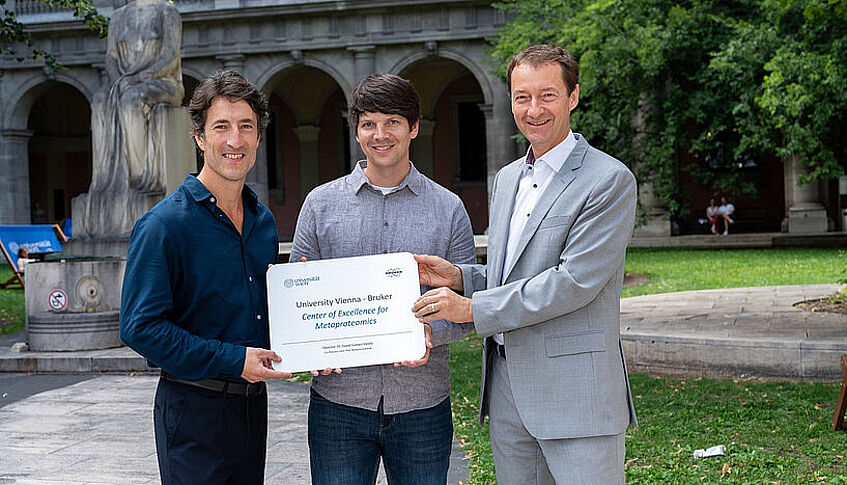Shining light on the "dark metaproteome"
A substantial portion of gut microbial activity—often referred to as the “dark metaproteome”—has remained invisible to science. Traditional metaproteomic approaches struggle to capture proteins from low-abundance organisms, many of which play critical yet underappreciated roles in shaping microbial ecosystems and influencing host health.
uMetaP addresses this sensitivity gap by combining state-of-the-art mass spectrometry (timsTOF Ultra with DIA-PASEF) and novoMP, a purpose-built de novo sequencing pipeline designed to rigorously control false discoveries in complex spectral landscapes.
By going beyond conventional database searches and harnessing the full depth of available data from mass spectrometry analyses, uMetaP expands both taxonomic detection and functional annotation, capturing protein-level signals from bacteria, archaea, fungi, viruses, and host tissues that were previously undetectable. Feng Xian, first author of the paper, explains: "Our new sequencing pipeline provides enhanced visibility of these organisms. It opens the door to studying underappreciated microbial players and their contributions to health and disease at an unprecedented resolution."
Record sensitivity: down to parts-per-million microbial signals
To evaluate the detection limits in a realistic setting, the team conducted controlled "spike-in" experiments by adding two stable isotope-labeled bacterial colonies (Ligilactobacillus murinus and exogenous Salinibacter ruber) to mouse fecal samples. uMetaP successfully detected as few as 10,000 bacterial cells per 10 mg of feces, a detection threshold in the parts-per-million range relative to an estimated 10 billion native gut microbes. This level of performance marks a major step forward for metaproteomics, enabling the detection of rare microbial signatures that may disproportionately influence host–microbiome dynamics and diseases.
From mice with gut injuries to relevance for human diseases
Applying uMetaP to a transgenic mouse model with a colonic injury driven by mitochondrial dysfunction, researchers tracked changes in the microbiome and the hosts responses over time. They captured an early and pronounced increase in Bacteroides caecimuris and mapped microbial metabolic pathways linked to the injury. Comparative analysis of the mouse data with Crohn’s disease patient transcriptomes revealed hundreds of overlapping molecules, strengthening the relevance of the findings to human diseases and reinforcing uMetaP’s potential in bridging experimental and clinical research.
Scientific Contact:
David Gomez Varela PhD
Center of Excellence for Metaproteomics University of Vienna - Bruker Daltonics
Division of Pharmacology & Toxicology
Department of Pharmaceutical Sciences
1090, Josef-Holaubek-Platz 2 (UZA II)
+43-1-4277-55361
david.gomez.varela@univie.ac.at


